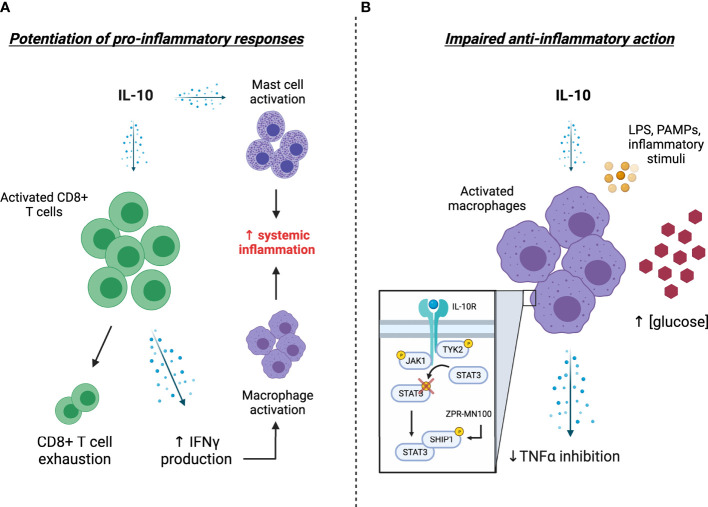Figure 1.
Potential explanations and consequences of elevated IL-10 levels in COVID-19. (A) Excessive stimulation of CD8+ T cells by IL-10 levels leads to T-cell overactivation and enhanced IFNγ levels, the latter of which further stimulates the production of pro-inflammatory factors by activated macrophages. The propagation of systemic inflammation is presumably bolstered by the IL-10 mediated activation of tissue-resident mast cells. (B) A hyporesponsiveness to IL-10 action (i.e., IL-10 “resistance”) impairs the ability of activated monocytes/macrophages to respond to circulating IL-10, thereby enhancing the release of pro-inflammatory cytokines such as TNFα into circulation. Mechanistically, this impairment in IL-10 action is associated with impaired STAT3 phosphorylation and appears to be driven by elevated blood glucose levels, providing a potential explanation for severe COVID-19 related outcomes in patients with diabetes. Treatment with the SHIP1 agonist ZPR-MN100 (previously known as AQX-MN100) overcomes high glucose-induced IL-10 resistance in macrophages and resolves colitis in IL-10 receptor knock-out mice, highlighting the potential of SHIP1 targeted therapeutics for combatting severe COVID-19. [Created with Biorender.com].

